
05 Apr Why Cone Beam CT Identifies Disease (and Pain) Earlier Than Dental X-Rays
One of the first pieces of equipment we purchased at our new dog and cat dental practice (Your Pet Dentist of Nashville) is a Cone Beam CT (CBCT). The reason for this decision is that research has proven that CBCT can identify endodontic disease (infected pulp cavity) much earlier than using conventional dental radiography. We perform CBCT on every case we see and is part of our pet dental dental regimen.
In addition to this reason, CBCT also identifies bone destruction from periodontal disease (PD) that takes more time to see radiographically. Studies have shown that you have to have 40% cortical bone destruction to see those changes on an x-ray. Cone beam identifies that bone loss earlier. This translates to an earlier diagnosis and treatment plan, thus giving your pet a better chance of removing pain and discomfort. I will write a separate blog on this interesting fact!
I want to share with you Scout, a beautiful (and well-mannered) Golden Retriever. He had a tooth fracture on the left maxillary 4th premolar tooth (208) that needed our attention. Below is the radiograph of this tooth. One can see mild lucency around the mesiobuccal and mesiopalatal roots. If one were to fast scan this image, they very well may miss the pathology. Gus would then go home and suffer in silence.
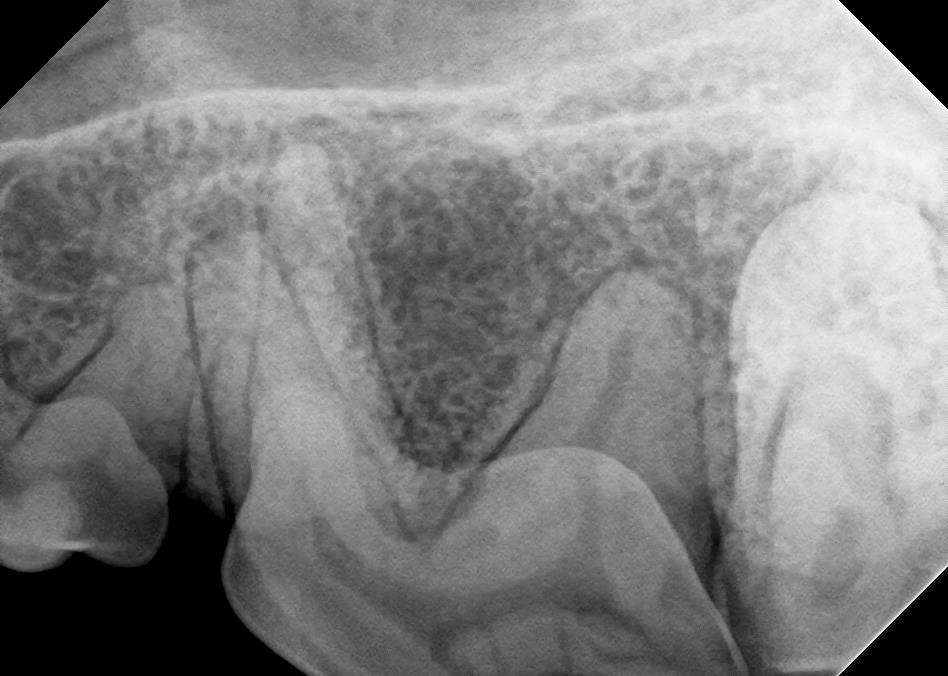
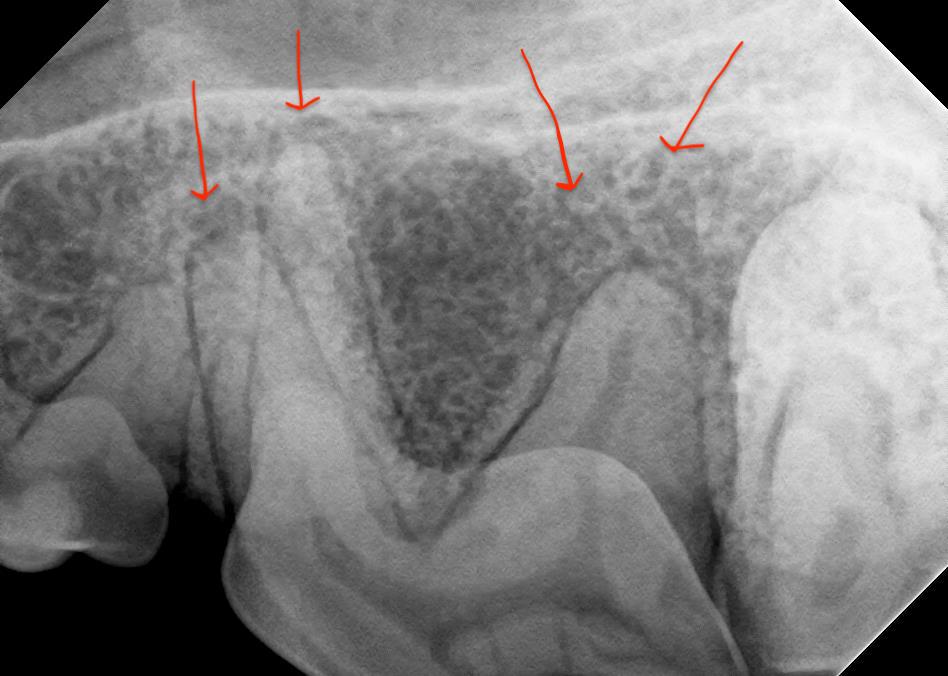
However, before we ever take dental images, we perform a CBCT on all cases. The scan takes roughly 30 seconds and the prep time to perform it is only a few minutes. Everything is done on the same table and area where the dental procedure is performed. Below is the CBCT of this exact tooth. Notice the high detail and definitive lucency’s around each root, indicating either an abscess or granuloma.
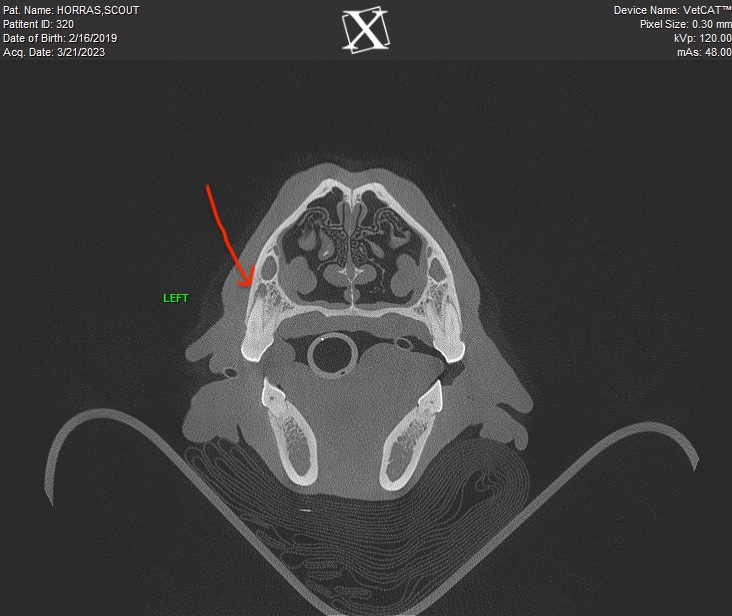
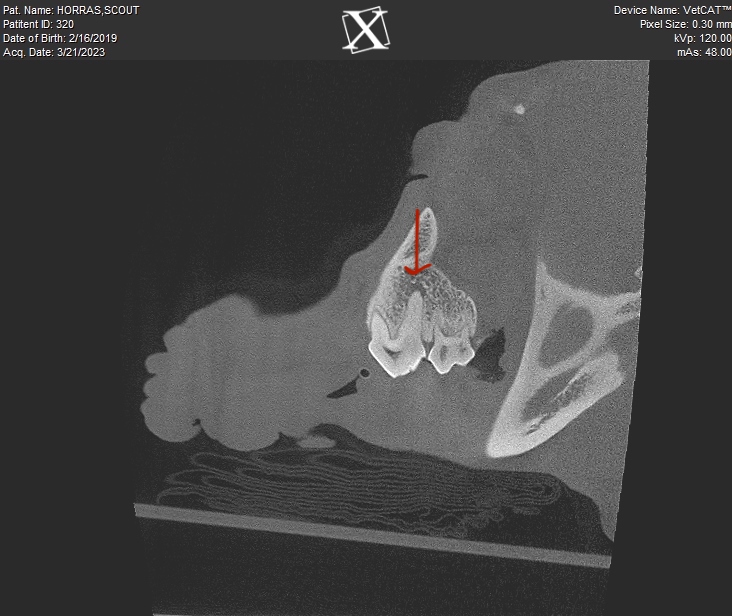
This disease is blatantly obvious on CBCT, and we were able to treat this tooth so that Scout can heal quickly and return to his frolicking and playing with the family. Most importantly, the pain from this infected tooth is now gone after treatment.
Utilization of CBCT is not relegated to dogs only. We use our CBCT on all cats as well, as we can identify a lot of pathology that is more subtle on conventional dental films. Below is a right maxillary canine tooth of a cool cat named Evie. She had a fractured canine tooth that the owner and family veterinarian noted. Our plan was to either perform a root canal or surgical extraction of the tooth. (When a tooth is broken and the pulp is exposed, there are two treatment plans…root canal therapy or surgical extraction. Watching it closely is not an option!)
We performed CBCT and the images were startling. There was a significant lesion at the apex of the tooth indicating either an abscess or granuloma, and the root end was resorbing. This tooth was therefore surgically extracted. The dental image of the same area did show a wide pulp cavity compared to the opposite canine tooth, but one could not truly appreciate the extent of the root end disease that was evident on CBCT.
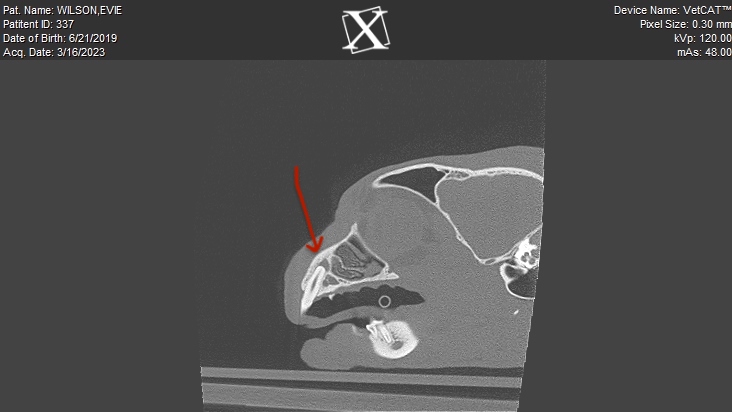
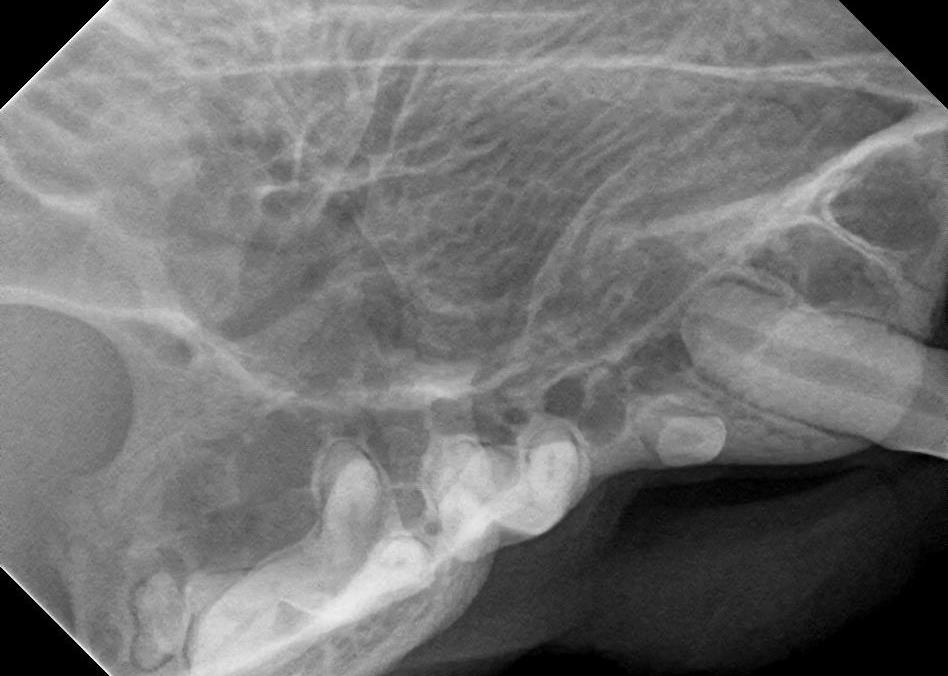
Therefore, CBCT provides our pet dentistry team the ability to identify (and treat) oral disease that is causing pain to your dog or cat. In a recent article by Doring, et. al, “CBCT provided more detailed information than did dental radiography. Therefore, CBCT would be better suited for use in diagnosing dental disorders in brachycephalic dogs.“(1) In an additional article, Doring and team wrote in a recent peer-review article ” CBCT provided more detailed information than did dental radiography. Therefore, CBCT would be better suited for use in diagnosing dental disorders in brachycephalic dogs.” (2) One can assume correctly that this translates to other breed conformations.
Your pet will return to normal health more quickly, which is our primary goal. It also gives us more detail regarding which treatment option is best for your pet. This allows us to be better pet dentists.
Your Pet Dentist is a referral-based dog and cat dental practice in Nashville serving middle Tennessee. However, we see clients as far away as Kentucky, northern Alabama, and east and west Tennessee. Have your family vet contact us for a referral.
The Your Pet Dentist Team (Dr. Greenfield and Dr. Briggs)
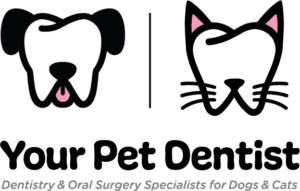
References:
1. Doring S, Arzi B, et al. Evaluation of the diagnostic yield of dental radiography and cone-bream computed tomography for the identification of anatomic landmarks in small to medium sized-brachycephalic dogs. Am J Vet Res. 2018: Jan ; 79(1); 54-61.
2. Doring S, Arzi B, et al. Evaluation of the diagnostic yield of dental radiography and cone-beam computed tomography for the identification of dental disorders in small to medium-sized brachycephalic breeds. Am J Vet Res. 2018. Jan: 79(1): 62-72.
Image by Carah_ from Pixabay on 4/5/23


